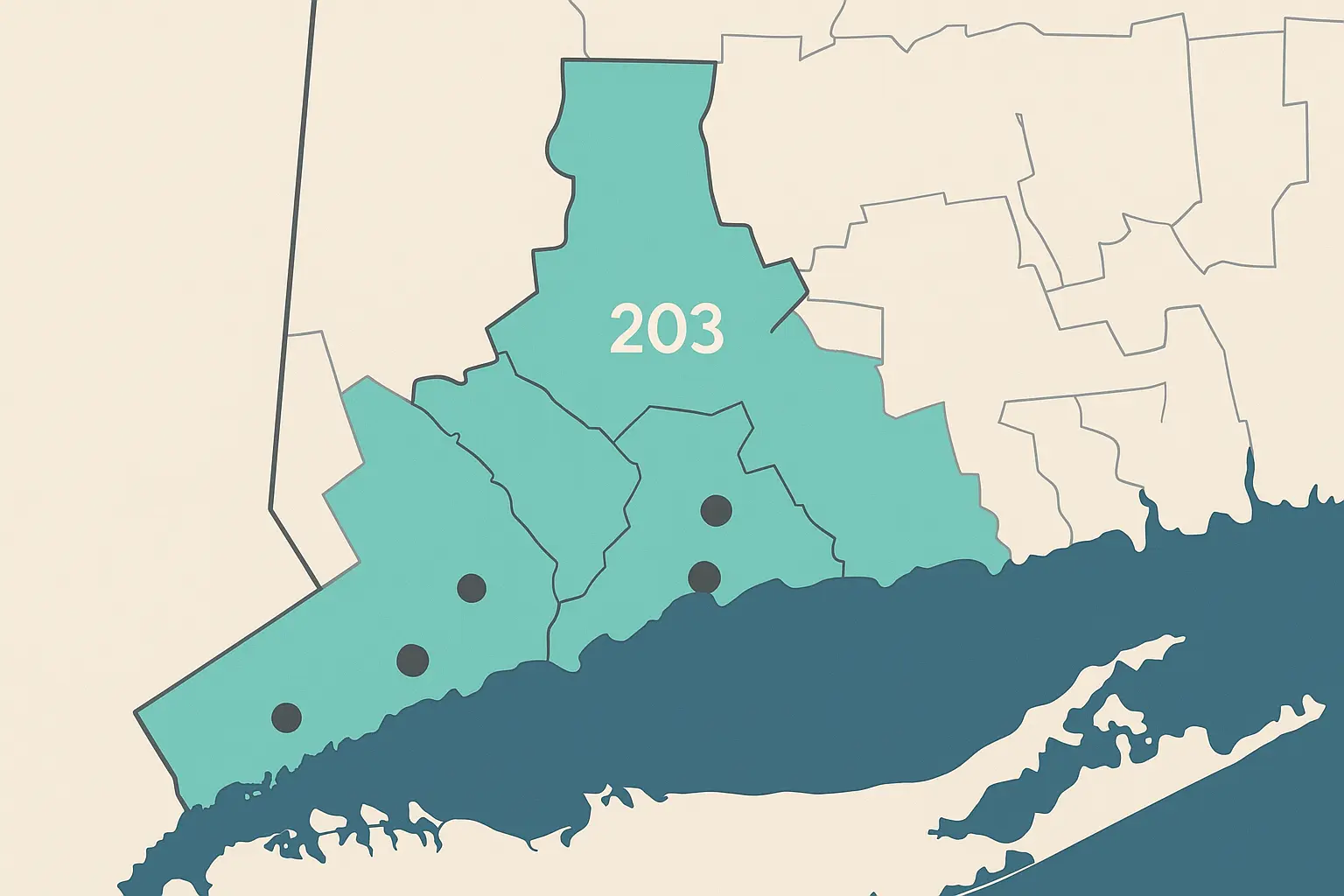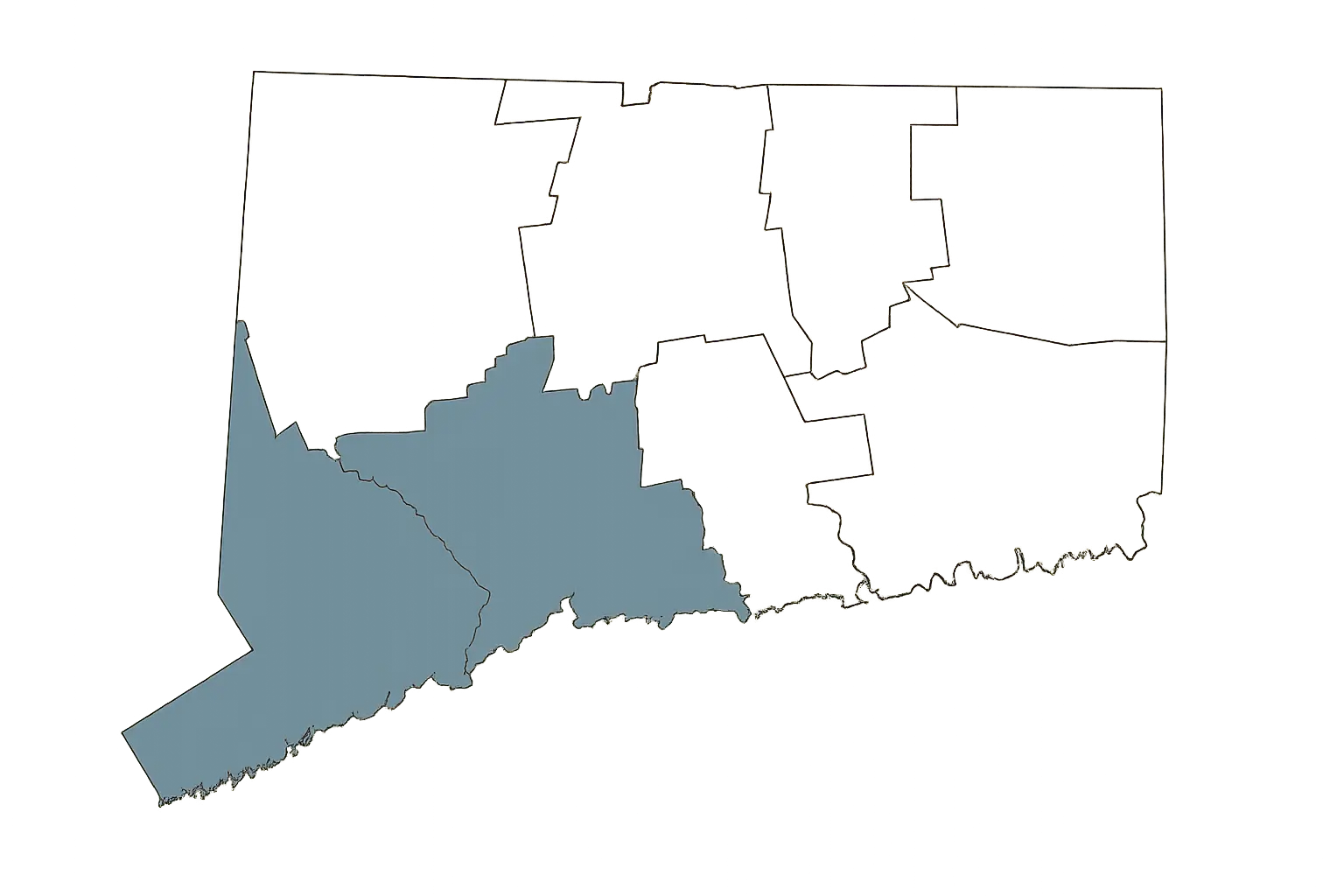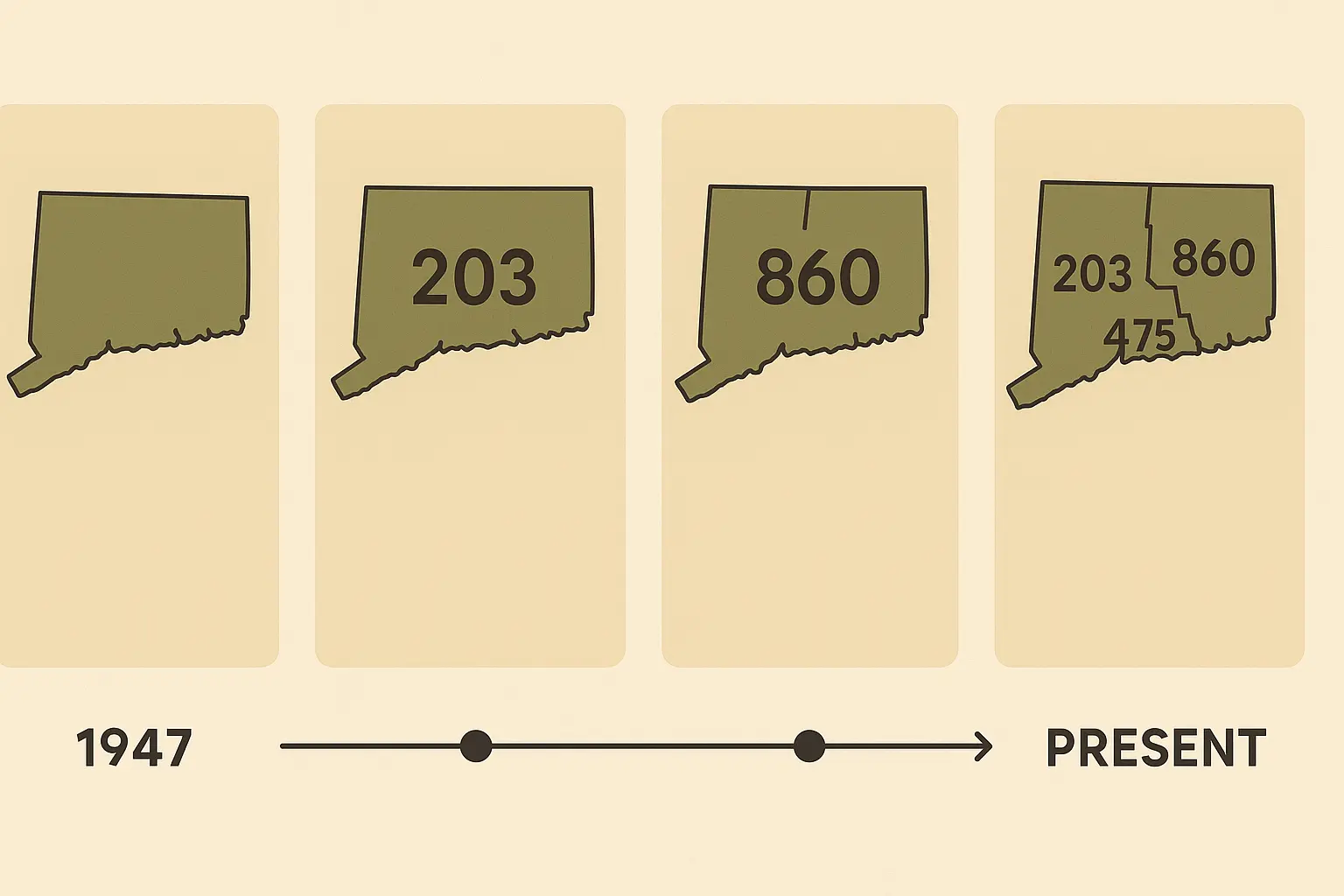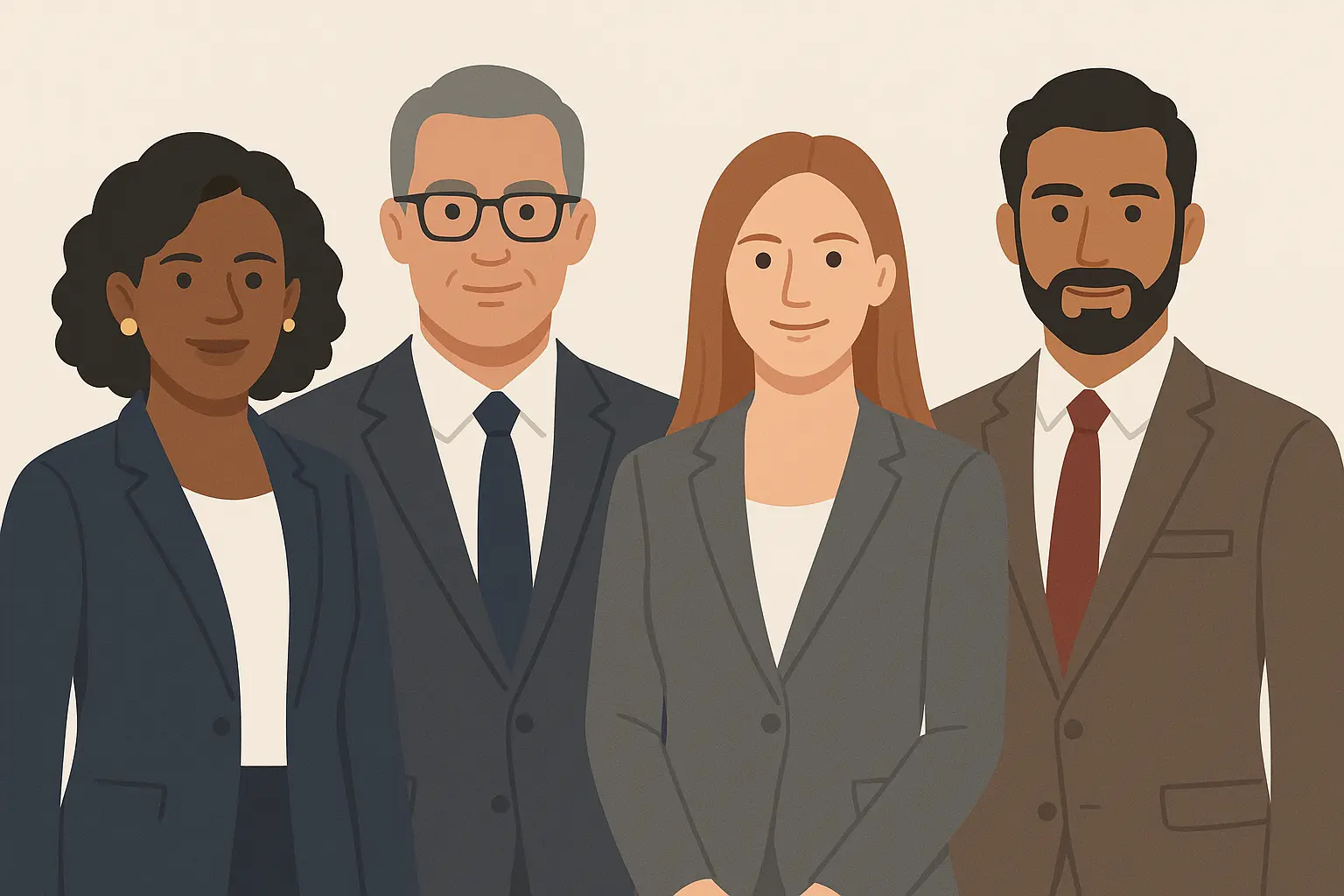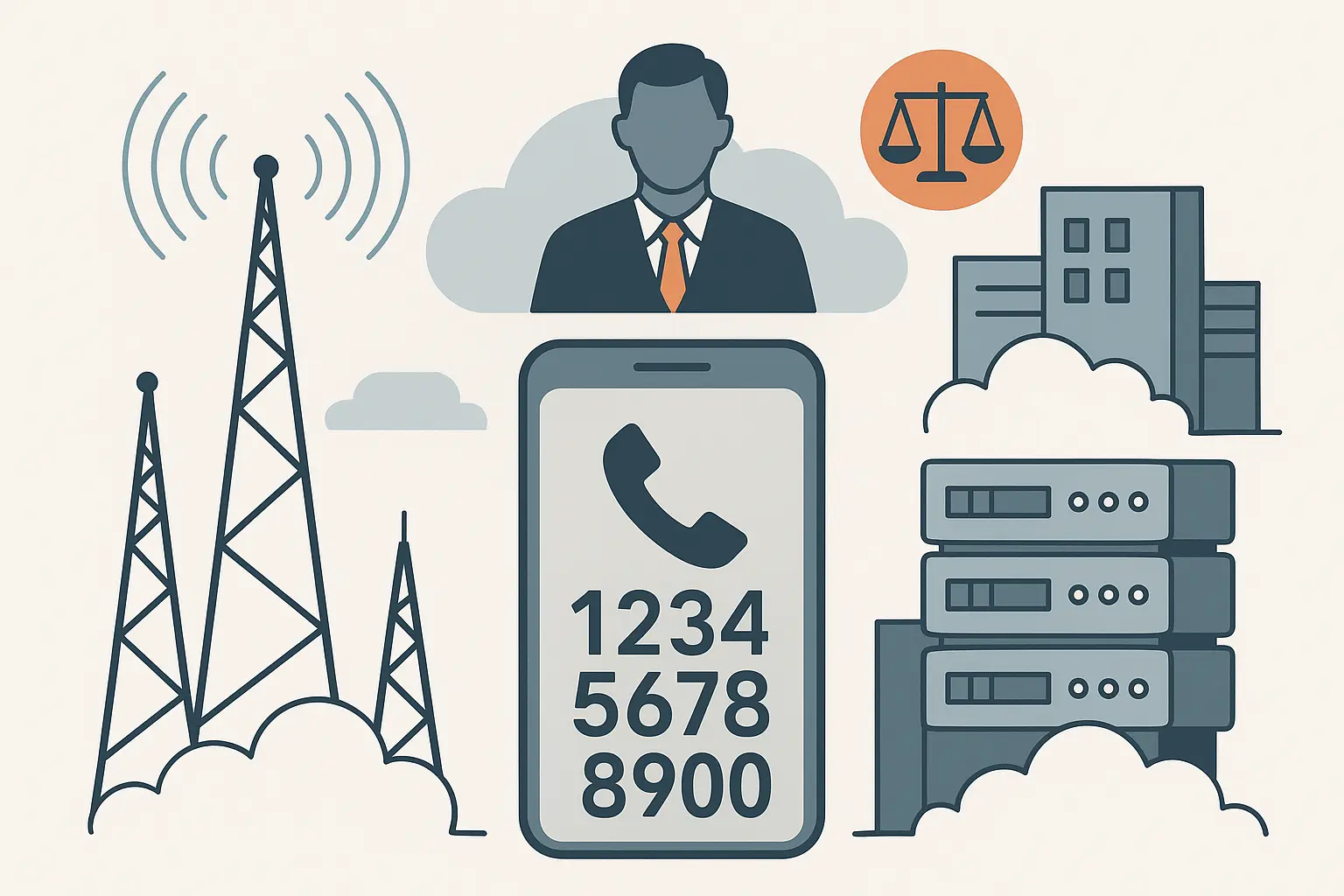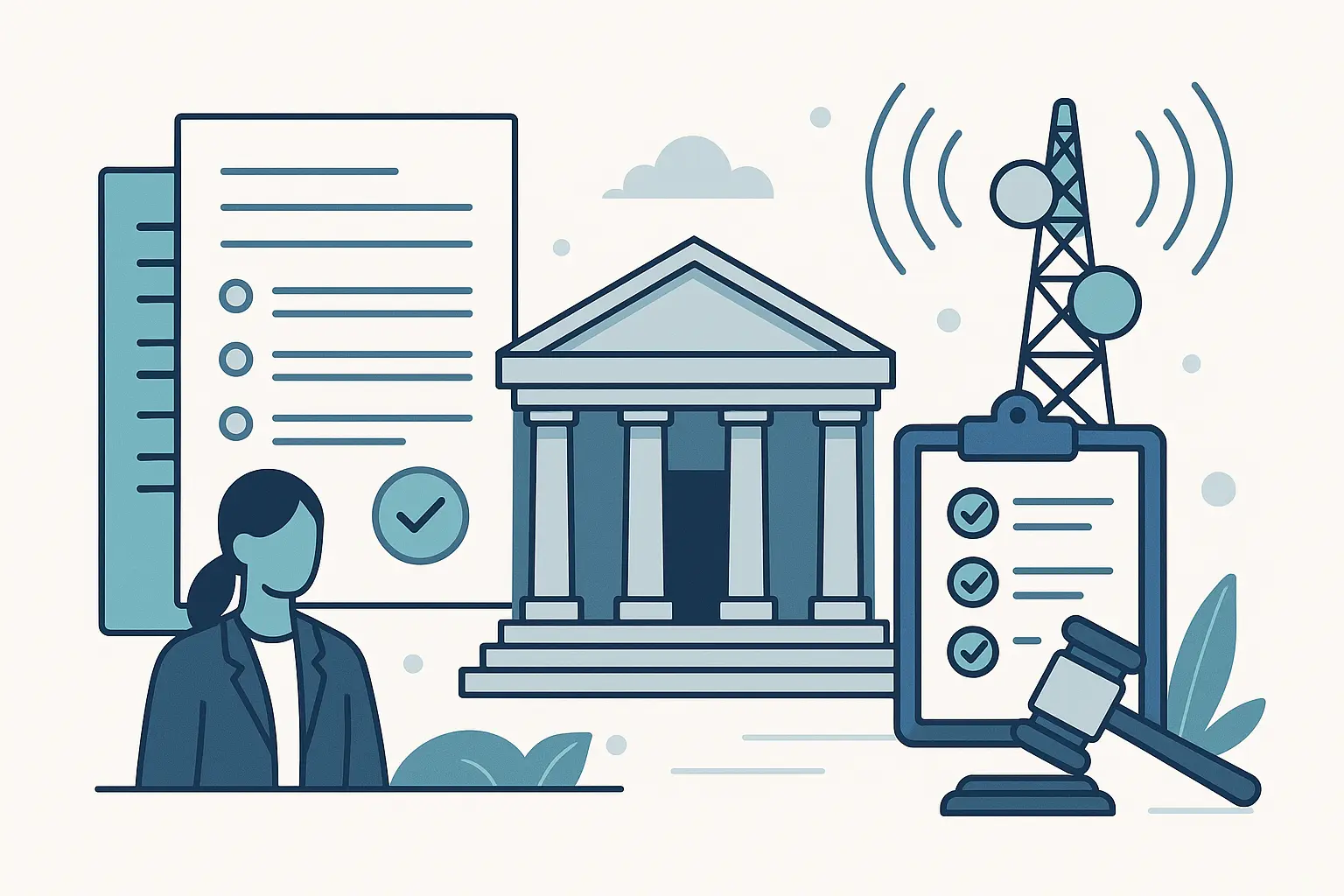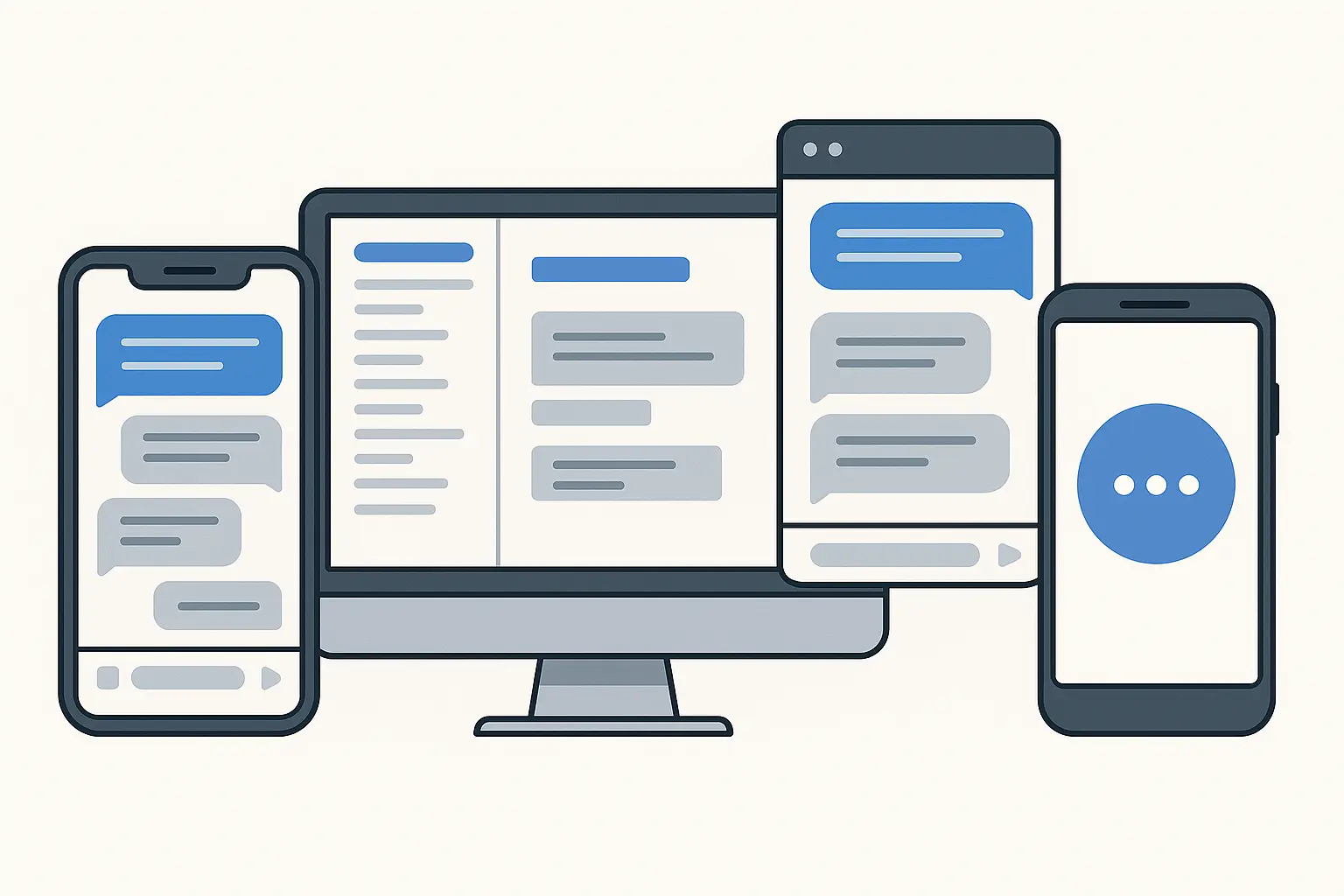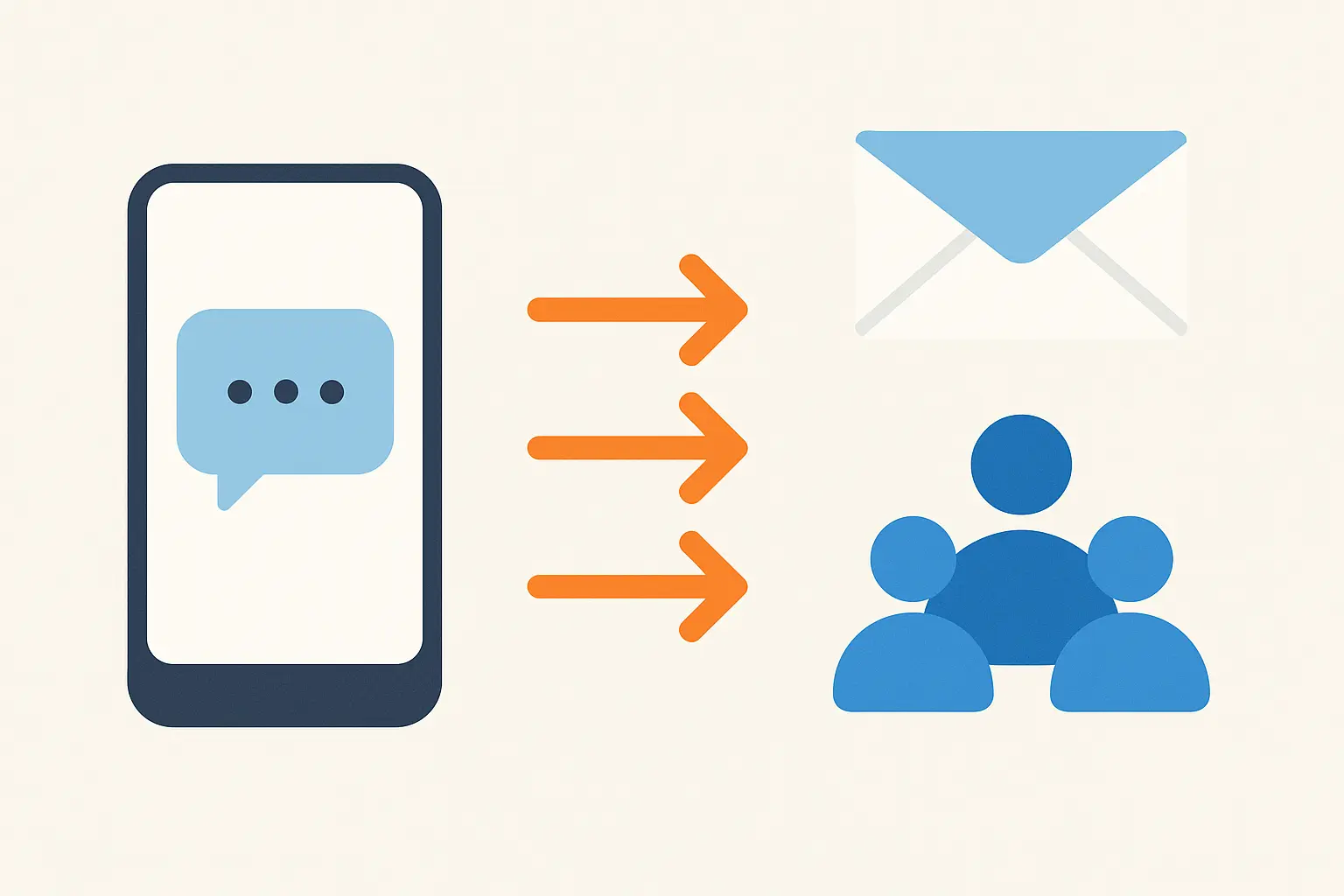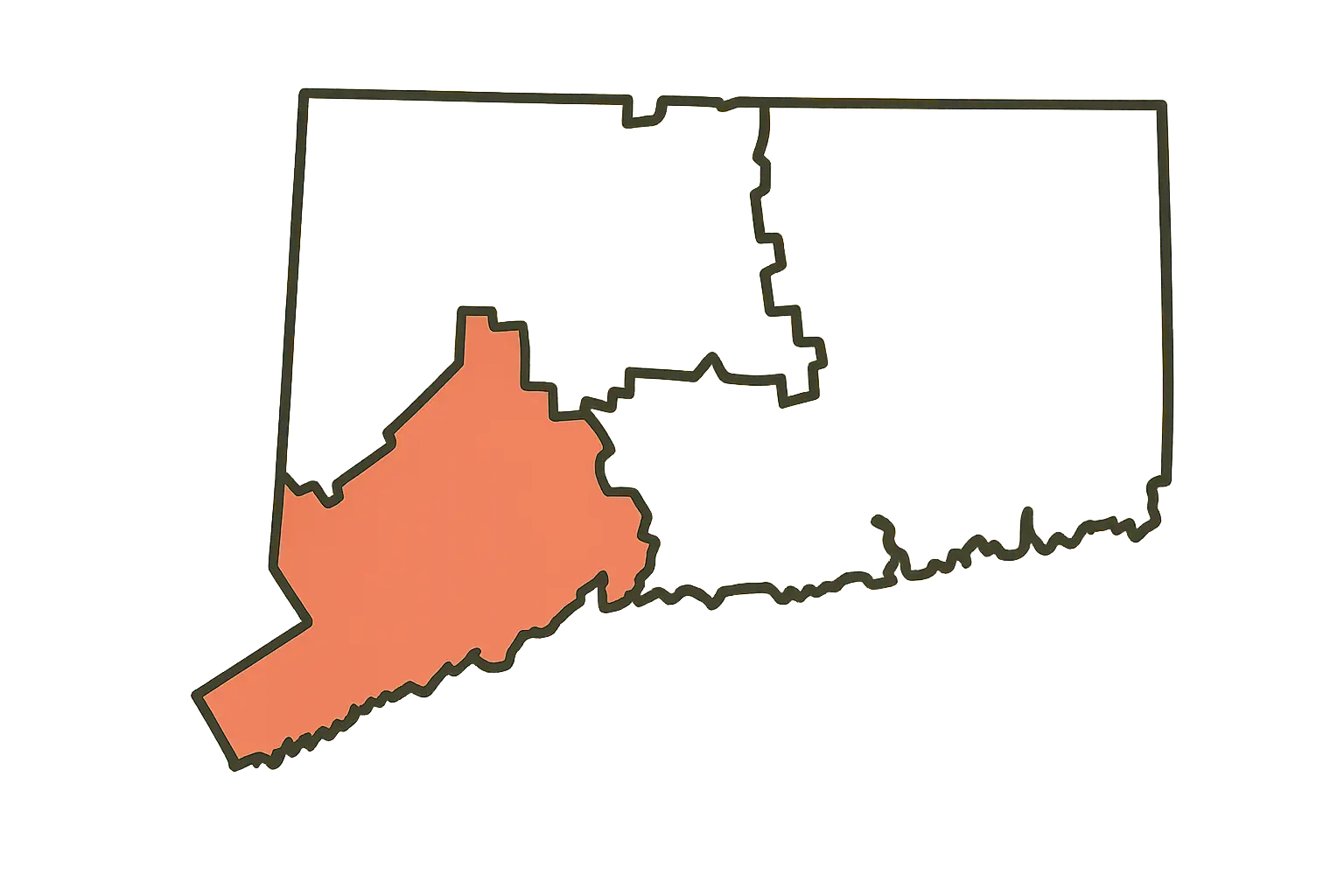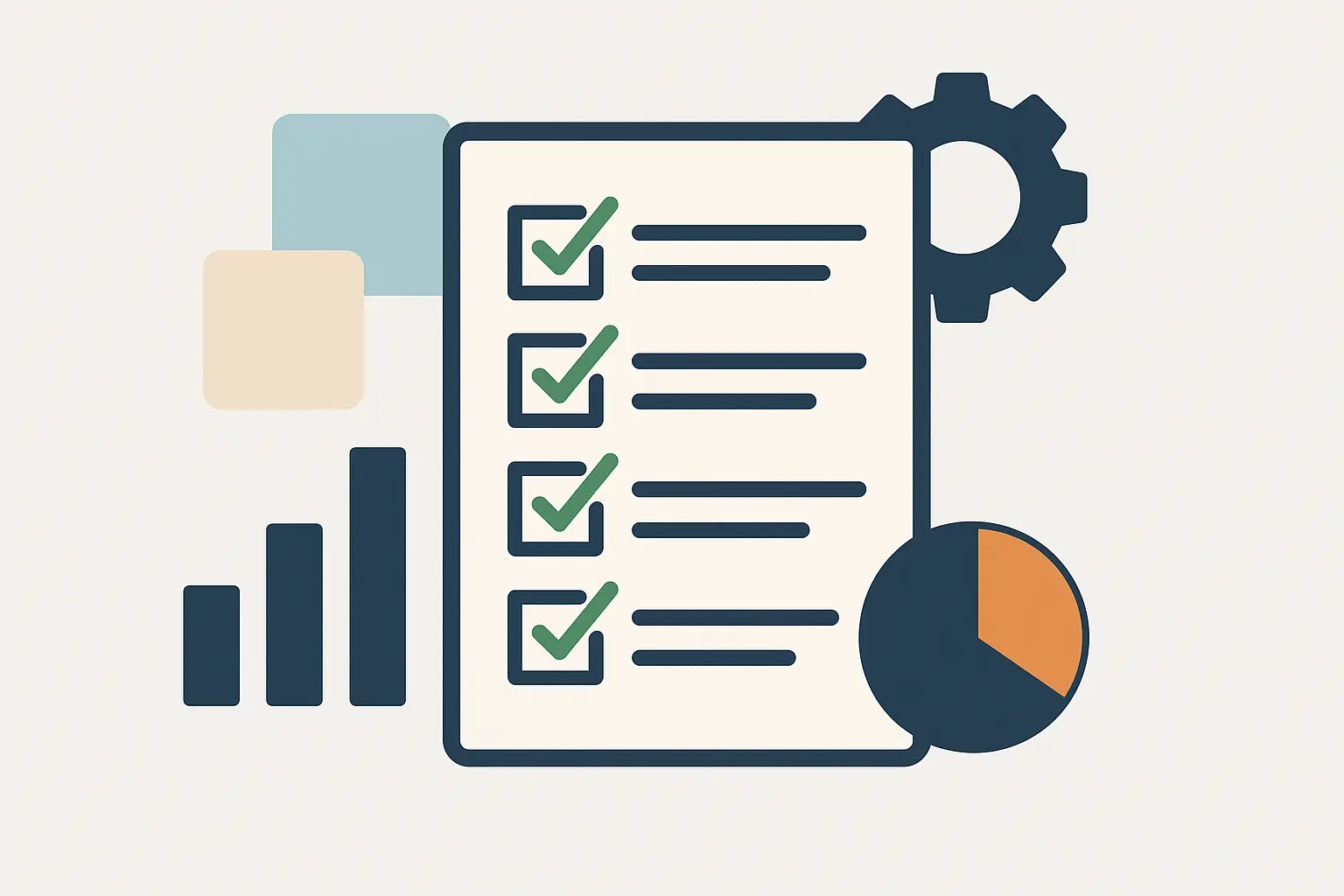Some phone numbers just feel more prestigious than others. Take Connecticut’s 203 area code – it’s become shorthand for “wealthy suburb” and “serious business.” But there’s way more to this three-digit code than meets the eye.
This area code covers southwestern Connecticut and has quite the story. Originally, it served the entire state back in 1947. Now it’s concentrated in one of America’s wealthiest corners, serving about 1.5 million people who’ve turned these three digits into a badge of regional pride.
What makes 203 special isn’t just geography – we’re talking about an area that includes hedge fund havens, Fortune 500 headquarters, and some seriously expensive real estate. Plus, it’s got this weird overlay situation with 959 that changed how everyone makes phone calls.
Table of Contents
Table of Contents
-
Where 203 Actually Covers (And Why It Matters)
-
From Statewide to Status Symbol: The 203 Story
-
Who Lives in 203 Territory Today
-
The Technical Stuff: How These Numbers Work
-
Why Your Business Should Care About This Area Code
TL;DR
Area code 203 covers southwestern Connecticut’s wealthiest areas, including cities like Stamford, New Haven, and Bridgeport. It started as Connecticut’s only area code in 1947 but got carved down to just the southwest corner. Now it shares territory with 959, meaning everyone has to dial 10 digits for local calls. The region is loaded with money, corporate headquarters, and people who see their area code as a status symbol.
Where 203 Actually Covers (And Why It Matters)
Connecticut’s Money Corner
When people ask about 203, you’re looking at Connecticut’s economic engine. This chunk of southwestern Connecticut is basically part of the greater New York metro area, which explains a lot about why it’s so wealthy and business-focused.
The big players here include Bridgeport (Connecticut’s largest city), New Haven (home to Yale), and Stamford (where lots of corporations have headquarters). You’ve also got Waterbury, Norwalk, and Danbury, each with their own economic specialties.
The Heavy Hitters
Here’s who’s really driving the 203 economy:
|
City |
Population |
What They’re Known For |
|---|---|---|
|
Bridgeport |
148,654 |
Manufacturing, biggest city in the state |
|
New Haven |
134,023 |
Yale University, education hub |
|
Stamford |
135,470 |
Corporate headquarters, finance |
|
Waterbury |
114,403 |
Historic manufacturing |
|
Norwalk |
91,184 |
Finance and tech companies |
Businesses definitely play up the 203 connection. A tech startup in Stamford might specifically want a 203 number to look legit with Fortune 500 clients – it signals they’re in the right neighborhood with access to top talent.
Geographic Reality Check
Most of 203 sits in Fairfield County, which is genuinely one of America’s wealthiest counties. The coverage stretches from the New York border east to about the Connecticut River, and from Long Island Sound up toward Massachusetts.
Everything runs on Eastern Time, which matters more than you’d think for business calls. West Coast companies calling 203 numbers need to remember that 3-hour difference or they’ll be waking people up.
The ZIP code situation gets messy because postal boundaries don’t line up perfectly with area code boundaries. Some ZIP codes cross into other area codes, which can confuse marketing campaigns and business setups.
From Statewide to Status Symbol: The 203 Story
The Original Connecticut Code
Back in 1947, 203 covered all of Connecticut. Every single phone number in the state started with 203, making it one of the original 86 area codes in North America. For almost 50 years, if you lived in Connecticut, you were 203.
That created serious brand recognition. As Connecticut By The Numbers notes, “There was a time, long ago but not far away, when residents in the entire state of Connecticut shared one Numbering Plan Area… All across Connecticut, it was 203.”
When Growth Forced Change
Connecticut’s population boom and the explosion of phone usage in the ’80s and ’90s pushed 203 toward running out of numbers. You can only fit so many phone numbers into a single area code before you need to do something drastic.
Understanding phone number formats becomes crucial when dealing with multiple area codes, as detailed in our guide on US phone number format standards and requirements.
The Big Split of 1995
In 1995, Connecticut split 203 for the first time. The new 860 area code took over northern and eastern Connecticut, while 203 kept the southwest. This wasn’t just administrative housekeeping – it fundamentally changed how people thought about Connecticut phone numbers.
Suddenly, your area code said something about where you lived. 203 became the “rich area code” while 860 got everything else.
The 2014 Overlay Mess
By 2014, even the smaller 203 region was running low on numbers. Instead of another split, they added 959 as an “overlay,” meaning both 203 and 959 now serve the exact same area.
This created the annoying requirement that everyone dial 10 digits for local calls. A Hartford law firm that had used 203 for decades suddenly had to tell longtime clients to dial the area code for local calls – a change that initially confused everyone.
Who Lives in 203 Territory Today
The Demographics Tell the Story
About 1.5 million people call 203 home, and they’re doing pretty well for themselves. The median household income hits $117,780 – way above the national average. People in their peak earning years (45-64) are pulling in around $138,631.
The breakdown looks like this:
-
66.4% White/Caucasian
-
19.9% Hispanic/Latino
-
12.2% Black/African American
-
Nearly 88% have college degrees or higher
-
About 66% are in the workforce
Education and Corporate Power
Yale University anchors the education scene, along with University of Bridgeport and other schools. This feeds a pipeline of educated workers to major corporations like General Electric (historically), Pitney Bowes, and tons of Fortune 500 companies with operations here.
The area code itself has become a business asset. Legal firms, medical practices, and financial services companies often hunt for 203 numbers because clients expect that local presence and associate it with credibility.
There’s real emotional attachment to these numbers too. As one Connecticut native told MEL Magazine: “I got my first cellphone in college, in 1998. It came with a phone number and, more specifically, a Connecticut area code (203). I’ve yet to change either of them… (203) just feels right to me.”
The Marketing Angle
Local businesses absolutely play up the 203 connection. It’s shorthand for “we’re established, we’re local, and we’re serious.” In competitive markets, having that local area code can be the difference between a callback and getting ignored.
A boutique financial planning firm in Greenwich found that clients specifically mentioned feeling more comfortable working with them after seeing their 203 number – they associated it with the area’s reputation for financial expertise.
The Technical Stuff: How These Numbers Work
Number Assignment Reality
Getting a 203 number involves a regulated process with telecom carriers, federal numbering administrators, and state authorities. Major providers like Verizon and AT&T get chunks of numbers based on demonstrated need and regulatory approval.
According to the North American Numbering Plan Administration, as of June 30, 2017, carriers reported about 523,000 numbers assigned using the 475 area code overlay in the region.
Keeping Your Number
Number portability rules let you keep your 203 number when switching carriers, which is huge for businesses that need consistent contact info. This flexibility has become essential as competition between carriers has heated up.
For businesses juggling multiple phone lines across different carriers, understanding how to forward text messages to email helps maintain seamless communication regardless of which carrier hosts your 203 number.
Government Oversight
The Connecticut Public Utilities Regulatory Authority works with federal agencies to manage number resources. They’ve implemented conservation measures and stricter assignment requirements to make the available numbers last longer.
They’re constantly monitoring usage rates to plan for potential future area code additions or changes. Given how much the region values its 203 identity, any future changes would likely be controversial.
Why Your Business Should Care About This Area Code
For businesses operating in 203 territory, communication strategy matters more than in most places. This region sits between major markets like New York and Boston, handling high-stakes commerce that demands reliable communication systems.
Companies with 203 numbers need constant availability, especially given the area’s role connecting major metropolitan markets. Auto Forward SMS provides solutions by ensuring critical text messages reach key personnel via email, even during poor mobile reception in dense urban areas or while traveling between Connecticut and neighboring states.
Businesses operating across multiple Connecticut locations can benefit from forwarding text messages to Slack channels to maintain team coordination and ensure no critical communications are missed.
Many 203 businesses operate across multiple locations within Fairfield and New Haven counties. Auto Forward SMS enables centralized message management by forwarding texts from various 203 numbers to specific email addresses or team platforms, streamlining operations across distributed teams.
For Android users managing 203 business lines, our comprehensive guide on forwarding text messages on Android phones provides step-by-step instructions for optimal message management.
Professional services common in affluent 203 areas – legal firms, medical practices, consulting companies – can use Auto Forward SMS to ensure client communications are never missed. The service’s filtering capabilities allow forwarding only urgent messages with specific keywords while archiving all business SMS communications for compliance.
New businesses can streamline their communication setup by getting started with AutoForward SMS to ensure professional message handling from day one.
Ready to enhance your 203 communication strategy? Try Auto Forward SMS today and ensure your business never misses critical messages in Connecticut’s competitive market.
Setting Up Your 203 Business Right
Essential Checklist:
-
☐ Verify your location falls within 203 coverage
-
☐ Choose between 203 or 959 for new lines
-
☐ Set up 10-digit dialing for all local calls
-
☐ Configure professional voicemail mentioning local presence
-
☐ Update marketing materials to highlight your 203 number
-
☐ Train staff on Eastern Time Zone scheduling
-
☐ Test call forwarding and messaging systems
Basic Communication Plan Template:
Business Name: _______________
Primary 203 Number: _______________
Backup Numbers: _______________
Operating Hours (EST): _______________
Key Contacts:
- Main Reception: _______________
- Emergency Contact: _______________
- After-hours Support: _______________
Message Setup:
- Email Forwarding: _______________
- SMS Forwarding: _______________
- Team Platform: _______________
The Bottom Line
The 203 area code represents way more than just three digits on your phone. It’s become a symbol of Connecticut’s economic success and regional identity. From covering the entire state to becoming a marker of affluence and business credibility, 203 has evolved right alongside the communities it serves.
Understanding where it covers, how it developed, and who uses it today gives you insight into one of America’s most economically important regions. Whether you’re running a business here or just curious about how phone numbers can become cultural symbols, 203 offers a perfect example of how technology, geography, and economics intersect.
As Connecticut keeps growing and changing, the 203 area code will adapt to meet future needs while keeping its distinctive identity as the gateway to New England’s business corridor. Not bad for three little digits.

